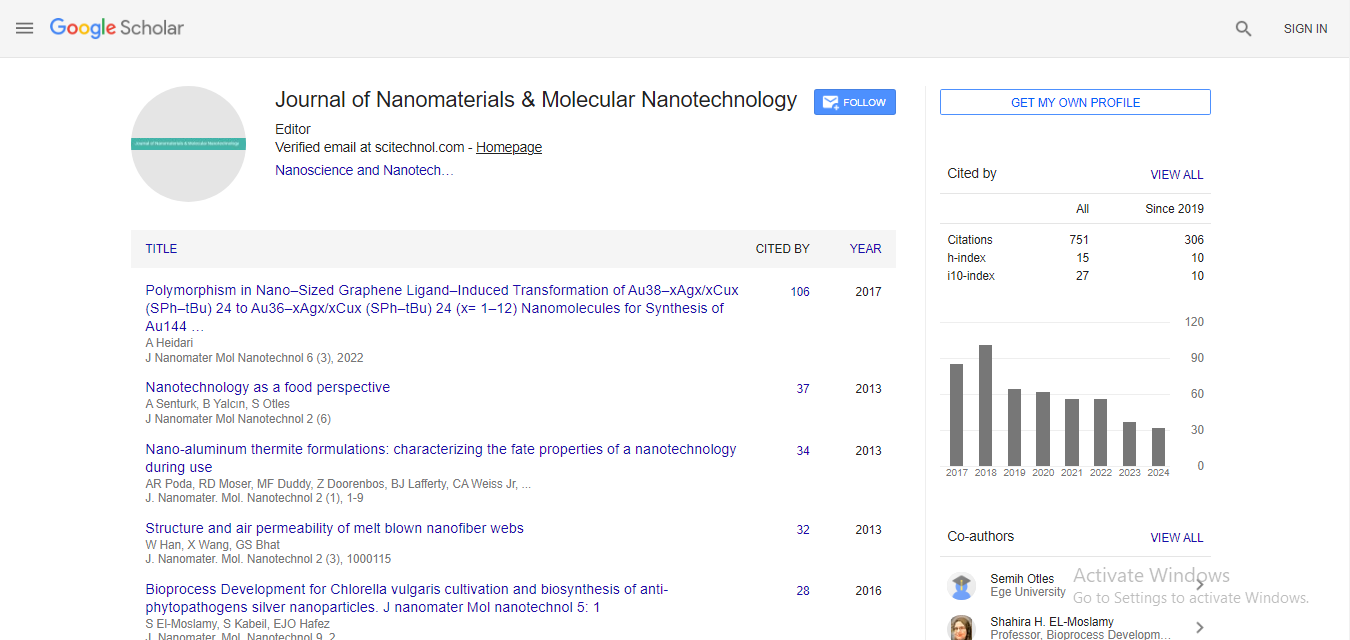Mixed-metal mof-derived carbon sponges for oil absorption
Cesar M. Oliva Gonzalez, Boris I. Kharisov,* Thelma E. Serrano Quezada, Lucy T. Gonzalez, Idalia Gomez de la Fuente, Oxana V. Kharissova
Universidad Autónoma de Nuevo León, México
Tecnologico de Monterrey, Mexico
: J Nanomater Mol Nanotechnol
Abstract
In this work, we propose the implementation of three carbon sponges, generated from the carbonization of melamine-formaldehyde sponges coated with different HKUST-type metal-organic frameworks (MOFs) in different thermal conditions. Nowadays, numerous investigations are focused on the development of new technologies for the rapid separation of water/oil mixtures. Several of these processes use hydrophobic materials of different nature for efficient oil capture. Despite these efforts, the water/oil separation still remains a great challenge. The main oil absorbers that are commercially available tend to be expensive and have complex synthesis; however, they usually have an acceptable cost/benefit ratio. Despite this, the passage of time has brought us new generations of materials, which seek to solve the problems in a more efficient way, as in the case of metal-organic frameworks (MOFs), which stand out for the great ease with which their morphological and surface aspects can be controlled. MOFs are extensively investigated in the fields of adsorption and catalysis; the MOF coated sponges do not meet the selectivity and stability standards to be applied in oil spills in water. However, this completely changes when subjected to the pyrolysis process, giving the material an increase in its surface area, hydrophobic and magnetic properties in addition to making the material suitable for its application. The employed MOF precursors were trimesic acid (BTC), nickel and cobalt salts. The monometallic HKUST type MOFs were synthesized using a simple method of controlled precipitation, which starts from two precursor solutions. It was revealed that the carbon sponges can selectively absorb oil in the water/oil mixture, possessing magnetic and enhanced hydrophobic and superhydrophobic properties. All the pyrolyzed carbon sponges, obtained at 500 and 700°C, were not the most optimal since they had absorption capacities of around 25 g/g and only supported up to 4 absorption cycles. On the other hand, the carbon sponges, obtained at 300°C, had absorption capacities greater than 40 g/g, in addition to being able to be reused up to 12 times without showing significant changes in their absorption capacity and having acceptable hydrophobic characteristics for the removal of oil dispersed in water. Among the three sponges obtained at 300°C, we highlight the sponges coated with BTC-Co, which have the highest absorption capacity (54 g/g) among all fabricated sponges. We conclude that the sponges obtained in the present work are a promising alternative to the materials that are traditionally used since they have great advantages such as their simple production method, low-cost starting materials and good absorption capacities. This work sheds light on the production of carbon materials from 3D templates decorated with MOFs, through a one-step carbonization process and we demonstrate that these materials have characteristics that make them applicable in the removal of oil dispersed in water, giving us a practical, economic and friendly alternative to the environment.
 Spanish
Spanish  Chinese
Chinese  Russian
Russian  German
German  French
French  Japanese
Japanese  Portuguese
Portuguese  Hindi
Hindi 



